Wednesday, October 27, 2021 – “Halloween” Media Franchise
- Mary Reed

- Oct 27, 2021
- 15 min read
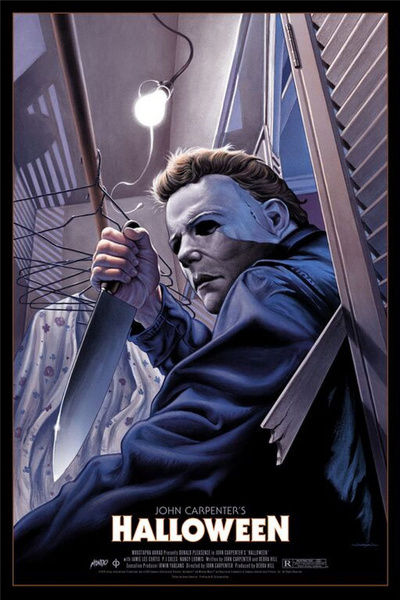
I am not a fan of horror movies. Being scared is not an emotion I crave. Also, I don’t think most horror films are known for their stellar acting. Only six horror films have ever been nominated for an Oscar for Best Picture. “The Silence of the Lambs” is the only one that has ever won. I am more of a thriller fan, doing without all the blood and guts. If the plot moves to unexpected places, I am sold. And if the action takes place in a dark room where you have to imagine what is going on, so much the better. Let’s learn more about the “Halloween” media franchise.
According to Wikipedia, “Halloween” is an American slasher media franchise that consists of twelve films, as well as novels, comic books, a video game and other merchandise. The films primarily focus on Michael Myers who was committed to a sanitarium as a child for the murder of his sister, Judith Myers. Fifteen years later, he escapes to stalk and kill the people of the fictional town of Haddonfield, Illinois. Michael's killings occur on the holiday of Halloween, on which all of the films primarily take place. The original “Halloween,” released in 1978, was written by John Carpenter and Debra Hill, and directed by Carpenter. The film, inspired by Alfred Hitchcock's “Psycho” and Bob Clark's “Black Christmas,” is known to have inspired a long line of slasher films.
Eleven films have followed since the 1978 original was released. Michael Myers is the antagonist in all of the films with the exception of “Halloween III: Season of the Witch,” a story with no direct connection to any other film in the series. In 2007, writer-director Rob Zombie created a remake of the 1978 film. A sequel to the 2007 film was released two years later. A direct sequel to the original film, which ignores all previous sequels, was released in 2018. Two sequels to the 2018 film, “Halloween Kills” and “Halloween Ends,” are scheduled for release in 2021 and 2022, respectively.
The films collectively grossed over $640 million at the box office worldwide. The film series is ranked first at the United States box office—in adjusted 2018 dollars—when compared to other American horror film franchises. The original film received critical acclaim, while the 2018 film received mostly positive reviews. The other films have received mixed or negative reviews from critics.

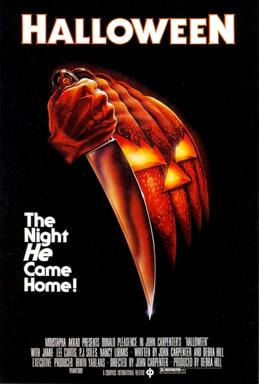
Overview
The original “Halloween” in 1978, co-written and directed by John Carpenter, tells the story of Michael Myers as he stalks and kills teenage babysitters on Halloween night. The film begins with six-year-old Michael (Will Sandin) killing his older sister Judith (Sandy Johnson) on Halloween night 1963 in the fictional town of Haddonfield, Illinois. He is subsequently hospitalized at Warren County's Smith's Grove Sanitarium. Fifteen years later, Michael (Nick Castle) escapes from Smith's Grove and returns to his hometown while being pursued by his psychiatrist, Dr. Sam Loomis (Donald Pleasence). Michael stalks high school student Laurie Strode (Jamie Lee Curtis) and her friends as they babysit. Murdering Laurie's friends, Michael finally attacks Laurie herself, but she manages to fend him off long enough for Loomis to save her. Loomis shoots Michael off a balcony, but when Loomis goes to check Michael's body, he finds it missing.
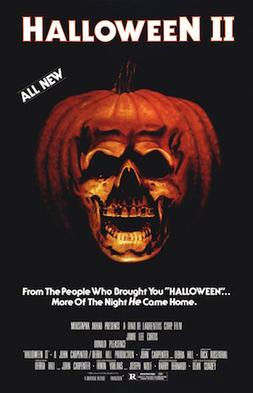
“Halloween II” in 1981 picks up where the events of “Halloween” left off. Michael (Dick Warlock) follows Laurie to the local hospital, killing everyone who comes between them. The story reveals that Laurie is actually Michael's sister: she was given up for adoption as an infant. After Michael chases Laurie throughout the hospital and she narrowly escapes him in the parking lot, he corners Loomis and Laurie in an operating room, where Loomis causes an explosion as Laurie escapes. Michael, engulfed in flames, stumbles out of the room before finally falling dead.
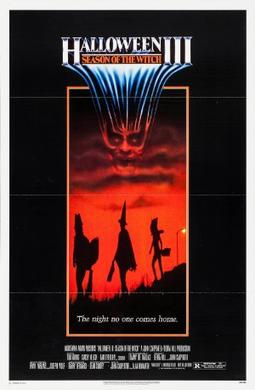
“Halloween III: Season of the Witch” in 1982 was an attempt to redirect the “Halloween” franchise into an anthology series; “Season of the Witch” does not follow the continuity of the previous two entries, presenting them as fictional movies within its narrative. This installment follows the story of Dr. Dan Challis (Tom Atkins) as he tries to solve the mysterious murder of a patient in his hospital. Joined by the patient's daughter Ellie (Stacey Nelkin), he travels to the small town of Santa Mira, California. The pair discover that Silver Shamrock Novelties, a company run by Conal Cochran (Dan O'Herlihy), is attempting to use the mystic powers of the Stonehenge rocks to resurrect the ancient witchcraft of the Celtic festival Samhain. Cochran is using his Silver Shamrock Halloween masks to achieve his goal, which will kill all the children wearing his masks as they watch a special Silver Shamrock commercial airing Halloween night. After destroying Cochran and his henchmen, Challis desperately tries to convince the television station managers not to air the commercial. The film ends with Challis screaming for a final station to stop the commercial.
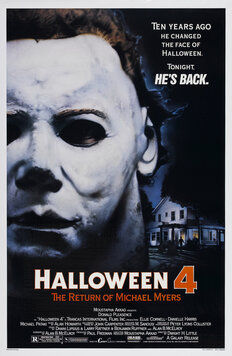
“Halloween 4: The Return of Michael Myers” in 1988, as the title suggests, features the return of Michael Myers (George P. Wilbur) to the film series. It is revealed that Michael has been in a comatose state for ten years since the explosion in “Halloween II.” While being transferred back to Smith's Grove, Michael awakens upon hearing that Laurie Strode, who died in a car accident, has a daughter, Jamie Lloyd (Danielle Harris). Michael escapes and makes his way to Haddonfield in search of his niece, while Dr. Loomis pursues him once again after learning that Michael has escaped transfer. Eventually, the police track Michael down and shoot him several times before he falls down a mine shaft.
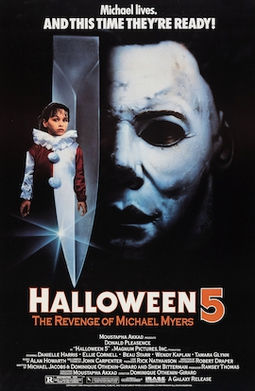
Picking up directly where the previous film ends, “Halloween 5: The Revenge of Michael Myers” in 1989 has Michael (Don Shanks) surviving the gunshots and the fall down the mine; he stumbles upon a hermit who bandages him up. One year later — showing signs of a psychic connection to Jamie — Michael tracks her to a local child mental health clinic. Using Jamie as bait, Loomis manages to capture Michael. The film ends with Michael being taken into police custody, only to be broken out of jail by a mysterious stranger, all dressed in black — whose black boots were shown throughout the entire film.
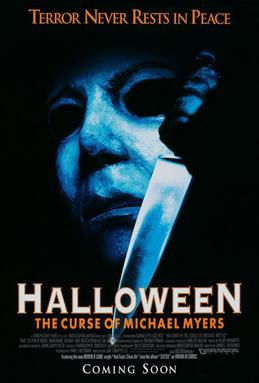
“Halloween: The Curse of Michael Myers” in 1995 picks up the story six years after the events of “Halloween 5: The Revenge of Michael Myers.” The mysterious stranger who broke Michael out of jail kidnaps Jamie Lloyd (J. C. Brandy) in an effort to obtain her child. Jamie escapes with her newborn son, while Michael (George P. Wilbur) pursues them. Michael kills Jamie and continues searching for her baby; the infant is found by Tommy Doyle (Paul Rudd) — the young boy who was babysat by Laurie Strode in the first film — who brings it home for safety. It is revealed that Michael is driven by the Curse of Thorn, which forces a person to kill their entire family in order to save all of civilization. The mysterious stranger is revealed to be Dr. Loomis's colleague, Dr. Wynn (Mitchell Ryan), who is part of a group of people who protect the chosen individual, so that they may complete their task. With the help of Kara Strode (Marianne Hagan), Laurie's adoptive cousin, Tommy keeps the infant from Michael, who slaughters Wynn and his followers. Michael is finally subdued by Tommy, who injects him with large quantities of tranquilizers inside the Smith's Grove Sanitarium. The film ends with Michael's mask lying on the floor of the lab room and Loomis screaming in the background, leaving the fate of both men unknown.

The events that transpire between the fourth to sixth films are effectively ignored in “Halloween H20: 20 Years Later” in 1998. This film opens 20 years after the events of the first two films and establishes that Michael Myers (Chris Durand) has been missing since the explosion in 1978. Laurie Strode (Curtis) has faked her own death so that she could go into hiding from her brother. Now working as the headmistress of a private school under the name Keri Tate, Laurie continues to live in fear of Michael's return. Her son John (Josh Hartnett) attends school where she teaches. Laurie's fear becomes reality when Michael shows up at the school and begins killing John's friends. Laurie manages to get John and his girlfriend (Michelle Williams) to safety, but decides to face Michael once and for all. Laurie decapitates Michael with a fire axe, finally killing him.
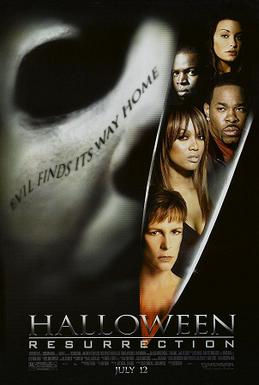
“Halloween: Resurrection” in 2002 picks up three years after “Halloween H20: 20 Years Later,” and reveals that Michael swapped clothes with a paramedic — crushing the paramedic's larynx so that he could not talk — and that was who Laurie killed. She is committed to a mental institution, where Michael (Brad Loree) shows up. He kills Laurie and travels back to his family home in Haddonfield, but finds a group of college students filming an internet reality show. Michael proceeds to kill everyone, until he is electrocuted by the only surviving student, Sara Moyer (Bianca Kajlich) and the show's creator Freddie Harris (Busta Rhymes). Michael's body and the bodies of his victims are then taken to the morgue. As the medical examiner begins to inspect Michael's body, he suddenly awakens.
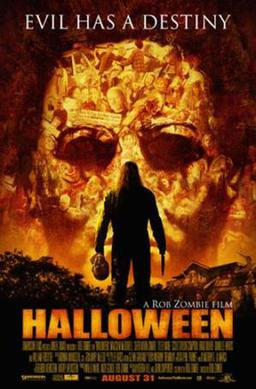
A remake of the original “Halloween” in 2007 focuses on the events that led Michael Myers (Daeg Faerch) to kill his family. It also identifies Laurie as Michael's sister early on, which was something not done in the original 1978 film. On Halloween, Michael murders a school bully, his older sister and her boyfriend, as well as his mother's boyfriend. Committed to Smith's Grove Sanitarium, Michael closes himself off from everyone. Michael's mother Deborah (Sheri Moon Zombie) commits suicide out of guilt. Fifteen years later, Michael (Tyler Mane) escapes and heads to Haddonfield to find his younger sister with his psychiatrist Dr. Loomis (Malcolm McDowell) in pursuit. Michael finds his sister living with the Strode family and going by the name Laurie (Scout Taylor-Compton). After killing nearly all of her friends and family, Michael then kidnaps Laurie and attempts to explain to her that he is her brother through the use of a picture that he has kept of himself and her as an infant. Unable to understand, Laurie fights back and eventually uses Loomis's gun to shoot Michael in the head. Laurie screams in horror as the credits roll.

A sequel to the remake in 2009 picks up right where the latter leaves off, and then jumps ahead one year. Here, Michael is presumed dead, but resurfaces after a vision of his deceased mother informs him that he must track Laurie down so that they can "come home" together. In the film, Michael and Laurie have a mental link, with the two sharing visions of their mother. It is also revealed that Laurie's original name is Angel Myers. During the film's climax, Laurie kills Michael by stabbing him repeatedly in the chest and face with his own knife. The final scene suggests that she has taken on her brother's psychosis as she dons his mask and is committed to an asylum, hallucinating her mother walking with a white horse.
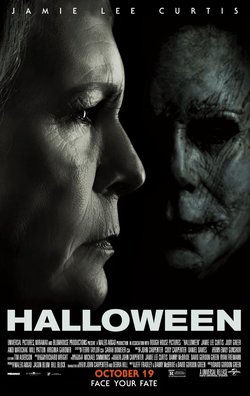
“Halloween” in 2018 is a direct sequel to the original film, ignoring the sibling relationship established in “Halloween II.” Michael (James Jude Courtney) was arrested in 1978 and has spent 40 years back in Smith's Grove Sanitarium. On the night before Halloween, during a prison transfer, Michael crashes the bus to escape and returns to Haddonfield for another rampage. After Michael kills his deranged psychologist, who has taken him to Laurie's home, he engages in a showdown with Laurie, her daughter Karen and her granddaughter Allyson. The trio ultimately trap him in her house, which they then set ablaze.
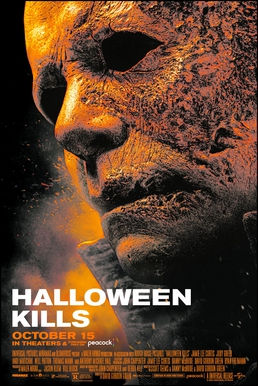
“Halloween Kills” in 2021 follows up with firefighters arriving at the blazing building, unwittingly freeing Myers to continue his killing spree.
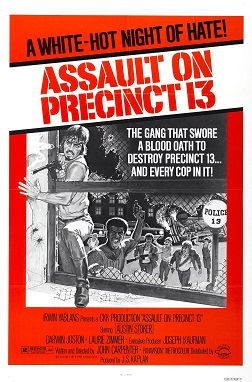
Development
After viewing John Carpenter's film “Assault on Precinct 13” in 1976 at the Milan Film Festival, independent film producer Irwin Yablans and financier Moustapha Akkad sought out Carpenter to direct for them a film about a psychotic killer stalking babysitters. Carpenter and Debra Hill began drafting a story titled “The Babysitter Murders,” but the title was changed at Yablans' request, suggesting the setting be changed to Halloween night, and naming it “Halloween” instead. Moustapha Akkad fronted the $300,000 for the film's budget, even though he was worried about the tight schedule, low budget and Carpenter's limited experience as a filmmaker. He finally decided to finance the film after Carpenter relayed the entire film to Akkad, "in a suspenseful way, almost frame for frame" and opted not to take any fees for directing the film. The low budget forced wardrobe and props to be crafted from items on hand or that could be purchased inexpensively, including the trademark mask worn by Michael Myers throughout the film. Production designer, art director, location scout and co-editor Tommy Lee Wallace created Michael's mask from a William Shatner Halloween mask, purchased for $1.98. The limited budget also dictated the filming location and time schedule. “Halloween” was filmed in 21 days in the spring of 1978 primarily in South Pasadena, California. An abandoned house owned by a church stood in as the Myers house. Two homes on Orange Grove Avenue in Hollywood were used for the film's climax.
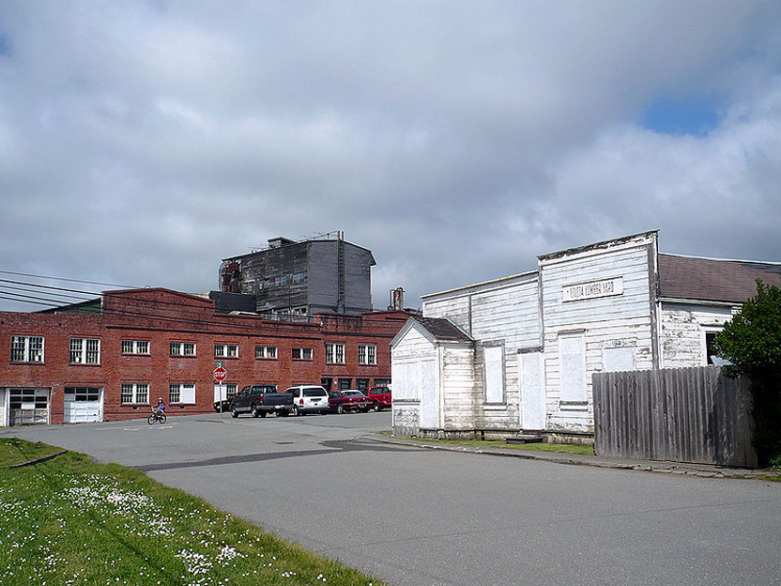
Following the success of “Halloween,” Yablans and Akkad began working on “Halloween II.” There was initial discussion about filming “Halloween II” in 3-D, but the idea never came to fruition. Debra Hill said, “We investigated a number of 3-D processes … but they were far too expensive for this particular project. Also, most of the projects we do involve a lot of night shooting — evil lurks at night. It’s hard to do that in 3-D.” After “Halloween II” was released, Carpenter and Hill were approached about creating a third “Halloween” film, but they were reluctant to pledge commitment. The pair agreed to participate in the new project only if it was not a direct sequel to “Halloween II,” which meant no Michael Myers. Most of the filming for “Halloween III: Season of the Witch” took place on location in the small coastal town of Loleta in Humboldt County, California. Familiar Foods, a milk bottling plant in Loleta, served as the Silver Shamrock Novelties factory, but all special effects involving fire, smoke and explosions were filmed at Post Studios.
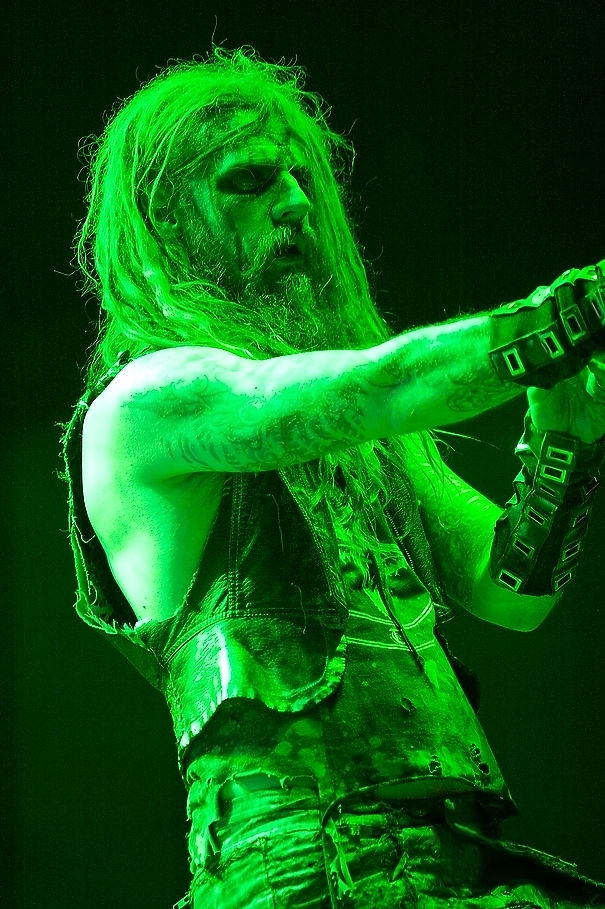
After “Halloween III” was released, Michael Myers was brought back with 1988's “Halloween 4: The Return of Michael Myers,” where he has stayed for the remainder of the series. Four more sequels would follow, between 1989 and 2002, before the series would take a break for five years. On June 4, 2006, Dimension Films announced that Rob Zombie, director of “House of 1000 Corpses” and “The Devil's Rejects” would be creating the next “Halloween” film. Bob Weinstein approached Rob Zombie about making the film, and Zombie — who was a fan of the original “Halloween” and friend of John Carpenter — jumped at the chance to make a “Halloween” film for Dimension Films. Before Dimension went public with the news, Zombie felt obligated to inform John Carpenter, out of respect, of the plans to remake his film. Carpenter's request was for Zombie to "make it his own [film]". Zombie's film would combine the elements of prequel and remake with the original concept, with considerable original content in the new film. Zombie also wanted to reinvent the character, as he felt Michael — along with Freddy Krueger, Jason Voorhees and Pinhead — had become too familiar to audiences, and as a result, less scary. Zombie delved deeper into Michael Myers's mythology. Michael's mask was even given its own story to provide an explanation as to why he wears it, instead of having the character simply steal a random mask from a hardware store, as in the original film. Zombie wanted to bring Michael closer to what a psychopath really is and wanted the mask to be a way for Michael to hide.
In 2008, a sequel to the 2007 remake was announced, with French filmmakers Julien Maury and Alexandre Bustillo in negotiations to direct. Instead, Zombie was resigned to write and direct the sequel, with the film taking place directly after the end of his remake. In an interview, Zombie expressed how the exhaustion of creating the first “Halloween” made him not want to come back for a sequel, but after a year of cooling down he was more open to the idea. The writer/director explains that with the sequel, he was no longer bound by a sense of needing to retain any "John Carpenter-ness," as he could now do "whatever [he] wants to do." Instead of focusing on Michael, Zombie chose to look more at the psychological consequences on Laurie after the events of the remake. As Zombie explains, after Michael murdered her friends and family, Laurie became a "wreck" who continually sinks lower as the film moves forward. Rob Zombie declined to return to film the second sequel to the 2007 remake. The second sequel, “Halloween 3D,” was cancelled in 2012.
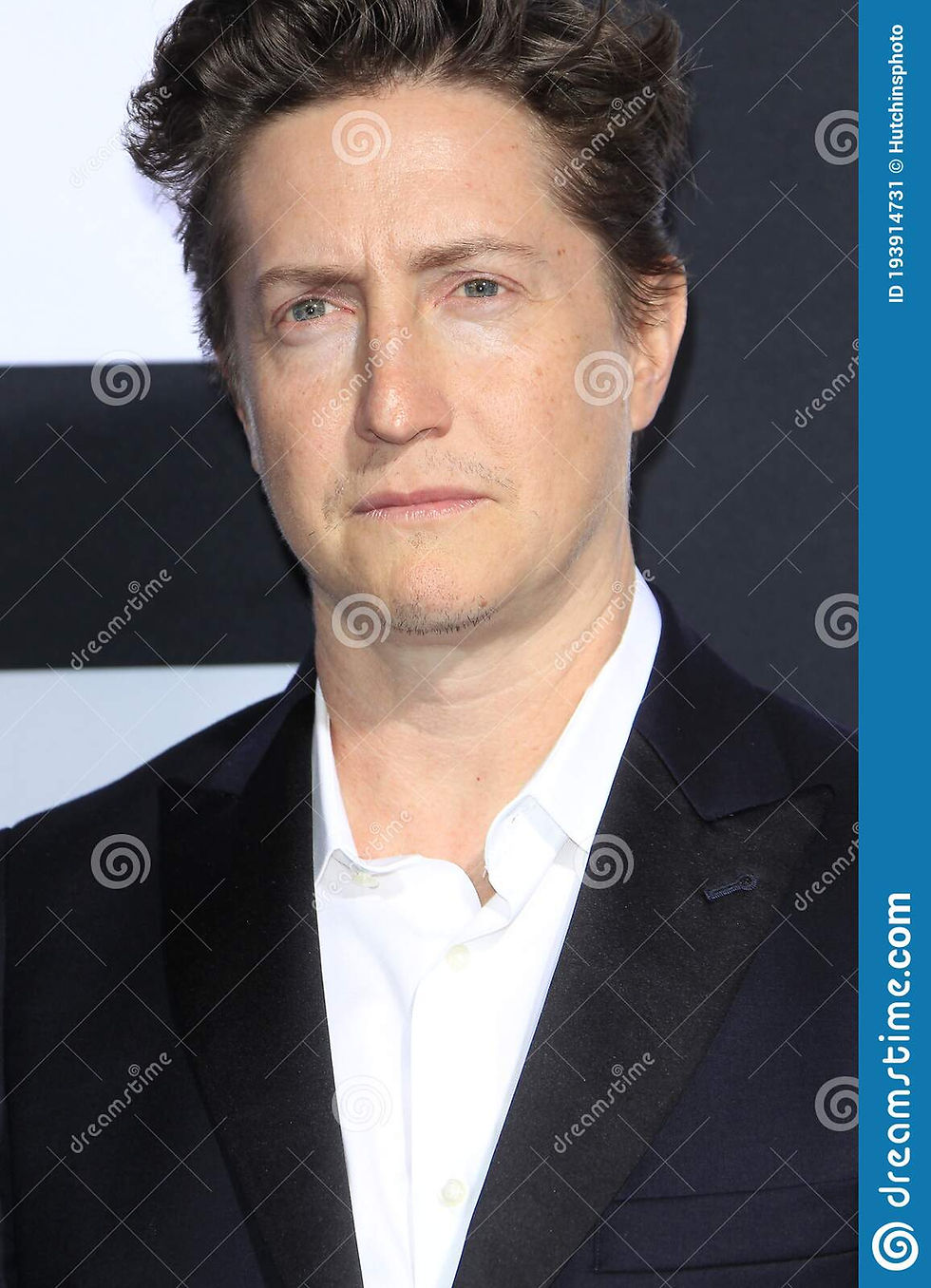
A new effort to make a Halloween film, “Halloween Returns,” was attempted in 2015, unrelated to the Rob Zombie films. This ultimately failed and was cancelled when Dimension Films lost the filming rights to “Halloween.” On May 23, 2016, it was reported that Miramax and Blumhouse Productions were developing a new film, which they would co-finance. On February 9, 2017, John Carpenter announced that a new “Halloween” film was going to be written by David Gordon Green and Danny McBride and directed by Green. The film would be a direct sequel to the original “Halloween” and ignore all of the previous sequels. Jamie Lee Curtis confirmed that she would reprise her role as Laurie Strode, and Judy Greer entered negotiations to play Laurie's daughter Karen Strode. Andi Matichak signed on to play Karen Strode's daughter and Laurie's granddaughter. The film was be distributed by Universal Pictures, its first involvement in the franchise since distributing 1982's “Halloween III: Season of the Witch.” John Carpenter returned to score the film, saying, "I'll be consulting with the director to see what he feels. I could create a new score, we could update the old score and amplify it or we could combine those two things. I'll have to see the movie to see what it requires." Nick Castle reprised his role as Michael Myers. Filming began on January 13, 2018, concluding on February 19, 2018. The film was released on October 19, 2018.
In June 2019, a sequel film was announced, with Green returning to write the script and direct and Curtis, Greer and Matichak reprising their roles from the 2018 film. The titles and release dates of two sequels were announced as “Halloween Kills,” set to be released on October 16, 2020, and “Halloween Ends,” set to be released on October 15, 2021. Green would direct both films and co-write the scripts with McBride, while Curtis reprised her role in both films. Teems was confirmed as a co-writer for “Halloween Kills,” while Paul Brad Logan and Chris Bernier were announced to co-write “Halloween Ends.” However, due to the concerns of the COVID-19 pandemic, both films were delayed by a year, with “Halloween Kills” released on October 15, 2021, and “Halloween Ends” scheduled for release on October 14, 2022.
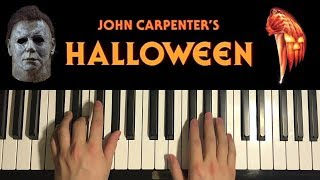
Music
John Carpenter composed the music to the first three films. For “Halloween,” he chose to use a piano melody played in a 5/4 time rhythm instead of a symphonic soundtrack. Critic James Berardinelli calls the score "relatively simple and unsophisticated," but admits that "’Halloween's’ music is one of its strongest assets." Carpenter stated in an interview, "I can play just about any keyboard, but I can't read or write a note." In the end credits, he bills himself as the "Bowling Green Orchestra" for performing the film's score, but he did receive assistance from composer Dan Wyman, a music professor at San Jose State University.
The score for “Halloween II” is a variation of John Carpenter's compositions from the first film, particularly the main theme's familiar piano melody played. The score was performed on a synthesizer organ rather than the piano used for “Halloween.” One reviewer for the BBC described the revised score as having "a more Gothic feel." The reviewer asserted that it "doesn't sound quite as good as the original piece," but "it still remains a classic piece of music."
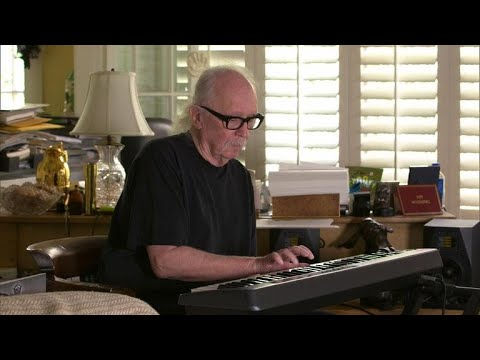
Music remained an important element in establishing the atmosphere of “Halloween III.” Just as in “Halloween” and “Halloween II,” there was no symphonic score. Much of the music was composed to solicit "false startles" from the audience. The soundtrack was composed by John Carpenter and Alan Howarth, who had also worked on the score for “Halloween II.” The score of “Halloween III” differed greatly from the familiar main theme of the original and its first sequel. Carpenter replaced the familiar piano melody with a slower, electronic theme played on a synthesizer with beeping tonalities. Howarth explains how he and Carpenter composed the music for the third film:
The music style of John Carpenter and myself has further evolved in this film soundtrack by working exclusively with synthesizers to produce our music, leading to a certain procedural routine. The film is first transferred to a time-coded video tape and synchronized to a 24-track master audio recorder; then while watching the film we compose the music to these visual images. The entire process goes quite rapidly and has 'instant gratification,' allowing us to evaluate the score in synch to the picture. This is quite an invaluable asset.
Following Carpenter's departure from the series, Howarth would stay on board as the sole composer for the next two sequels and also acted as the lead composer on “Halloween: The Curse of Michael Myers,” with Paul Rabjohns providing additional music when the initial edit of the film was substantially re-filmed. While “Halloween H20” credits John Ottman as its sole composer, in reality most of the soundtrack was provided by “Scream” composer Marco Beltrami, using a mixture of music from that film and a few original cues written by Beltrami, after the producers disliked Ottman's score. Danny Lux provided the soundtrack for “Halloween: Resurrection,” while Tyler Bates composed the soundtracks for both the 2007 “Halloween” reboot and its 2009 sequel.

Box office
The “Halloween” series, when compared to the other top-grossing American horror series — “A Nightmare on Elm Street,” “Child's Play,” “Friday the 13th,” “Hannibal Lecter” series, “Psycho,” “Saw,” “Scream” and “The Texas Chainsaw Massacre” — and adjusting for 2018 inflation is the highest-grossing horror series in the United States at approximately $761.3 million. Next in line is “Friday the 13th” at $755.6 million, followed by “A Nightmare on Elm Street” series with $730.3 million. The “Hannibal Lecter” film series closely follows in fourth with $727.6 million. The “Saw” series with $580.9 million, “Scream” with $586.9 million, “Psycho” with $554.4 million, “The Texas Chainsaw Massacre” with $391 million and the “Child's Play” film series rounding out the list with $249.6 million.
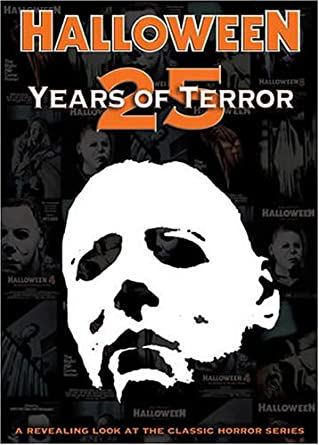
Documentary
“Halloween: 25 Years of Terror” is a DVD released on July 25, 2006, featuring a documentary on the “Halloween” films, narrated by P. J. Soles and featuring interviews from many of the cast members as well as filmmakers of the “Halloween” films and a lot of footage from the series as well. It has panel discussions with members from the casts and crews of most of the “Halloween” films, plus other celebrities and filmmakers such as Rob Zombie and Clive Barker as well as film critics. All of the panel discussions took place at a 25th anniversary convention in Pasadena, California — one of the filming locations of the original “Halloween” — in October 2003. It also has extended versions of interviews featured in the documentary and much more. In 2010, The Biography Channel produced a television special titled “Halloween: The Inside Story,” which premiered on October 28, 2010.




Comments